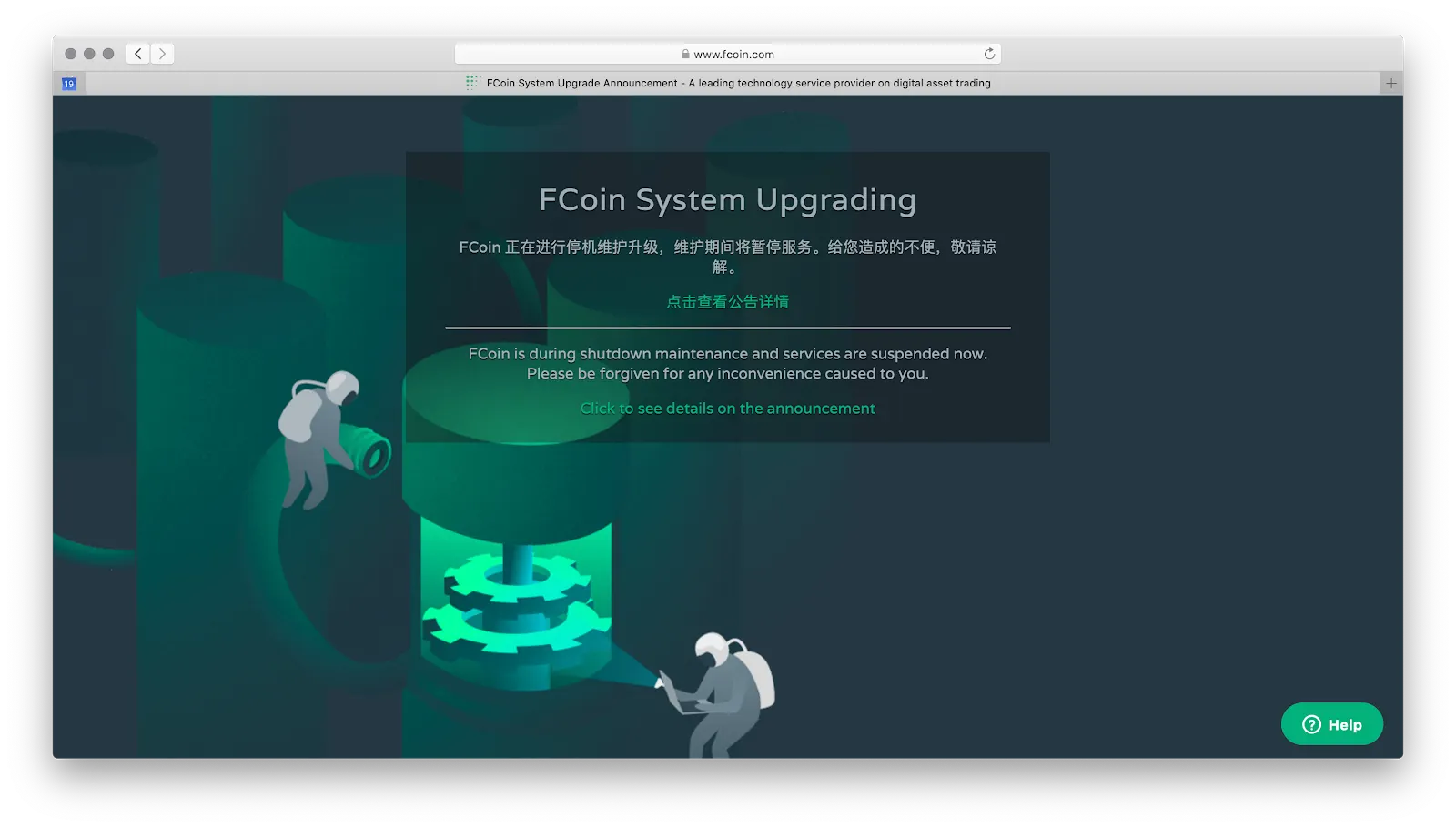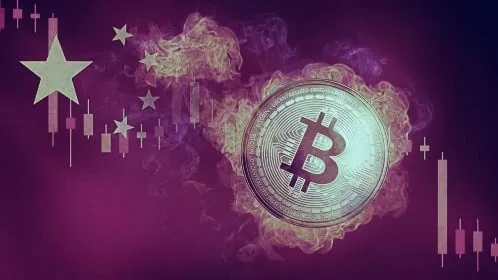The invention of gunpowder encouraged ancient Chinese states to fight against each other for territory. In the same way, the invention of token burning has ignited a smokeless war between prominent exchanges over market share. Some, such as OKex, have risen from the ashes, while others such as FCoin, seem to be burning down.
The idea of token burning, which is similar to stock buybacks among public companies, appears to have been invented by Shanghai-born Binance. The idea was first outlined in its white paper, and initiated in 2017. That's when Changpeng Zhao, Binance’s co-founder and CEO, pledged to burn 20% of the exchange’s quarterly profit in the form of its native BNB, until half its token reserve is depleted. Investors have long celebrated CZ’s novel idea with “flowers and applause (鲜花和掌声)”.
Why burn tokens?
Deflationary policies, such as token burning, reduce the amount of token circulation, and hence raise token prices—that’s simple supply-demand logic. A more valuable exchange token attracts more users, activity, and better liquidity. As a result, token burning has become a common competitive tactic among exchanges—especially those that cater to Chinese investors.
Last week, Binance’s old trick was perfected by OKex, another global exchange giant that targets Chinese customers. Among the biggest exchanges in the world, with 20 million customers in 100 countries, OKex was born in Beijing. It “officially” moved to Malta in April, 2018, after officially decamping from China (like Binance) during the post 2017 crackdown. The site, however, remains hugely popular among Chinese traders.
On Feb 10th, OKex abruptly announced that it would launch its own blockchain, OkChain. Another blockchain? Zzzzz. But to prepare for this, the exchange said it would burn 70% of its exchange token OKB’s supply and voila! The coin surged 90%. (The company has actually been dabbling with burning tokens for nearly a year.)
Trouble at FCoin
Exchange tokens have performed astonishingly well lately, especially compared to non-exchange altcoins. Binance’s BNB and Huobi’s HT have seen similar spikes.
However, not everyone wins in this token-burning game. FCoin, a native Chinese exchange that gained popularity from its trans-fee mining incentive program (which created the perception among traders that there were no transaction fees), has itself been burned rather badly.
Afraid of missing out on the token-burning game, FCoin announced on February 10 that it would permanently destroy the supply of its platform token FT—some 720 million coins—held by employees. FT’s price shot up as soon as the announcement was made… but not for long. Six hours later, the platform mysteriously shut down; it remains inactive.

No official explanation has been given about why the exchange was shuttered. Some suspect that FCoin’s announcement antagonized its employees, who worked so hard but lost all their upside due to the token-burning fad. The theory is that a disgruntled employee (or group of them) shut the entire thing down. After all, what do they have to lose?
The tragedy revealed another side of the exchange market. As market sentiment turns bullish along with the price of crypto, exchanges are becoming increasingly competitive. To gain more customers, especially new ones who want to participate in the halving market, each exchange has to identify its edge. For OKex, burning the majority of its tokens allowed the exchange to reestablish itself as a market leader.
But for the unfortunate smaller players, such as FCoin, competing without strong backup appears to have resulted in a burning disaster.
Top 3 other things that happened:
#1: Huobi revealed HBTC, its new BTC wrapper
On Valentine’s Day, Huobi, one of the largest crypto exchanges in the world, launched Huobi BTC, a new ERC20 token that’s fully pegged 1:1 to BTC. Aiming to inject BTC liquidity into the DeFi ecosystem, Huobi put up a little over 500 BTC for BTC holders to enter the playground of Ethereum DeFi space.
Tokenizing BTC on Ethereum is not a new idea. WBTC, which also standardizes BTC to an ERC20 format, was launched in early 2019 and braggs to “delivers the power of Bitcoin with the flexibility of an ERC20 token.” And Imtoken, one of the largest crypto wallets in China, launched mBTC, another BTC wrapper in Oct 2019.
While HBTC may lack originality, it compensates with scale and usability. Huobi has a reserve of 400,000 BTC, providing crucial liquidity that will allow DeFi platforms to scale. In addition, it’s the first major exchange to launch a 1:1 pegged BTC on Ethereum. By comparison, one competitor, Binance, has only launched a BTC wrapper on its Binance chain, rather than Ethereum.
One major feature that distinguishes HBTC from the other BTC wrappers is the company that launched it: Huobi, the model crypto student endorsed by official headmaster, aka the Chinese government. By integrating HBTC into its ecosystem, DeFi players can leverage Huobi’s existing infrastructure to offramp their token within minutes. Not many exchanges have the technical and operational capability to fulfill such user experiences.
As one of Huobi insiders told this correspondent: HBTC is a Valentine’s Day gift.
#2: Canaan's stock price surged 80%
“Canaan doesn’t look like a US stock to me. It fluctuates more like an ICO project,” one trader told me last week.
Indeed, Canaan, a Hangzhou China-based company, and the first crypto-mining company to debut on Nasdaq, in 2019, experienced an 80% stock price surge on Feb 12th. Some have attributed the surge to the imminent bitcoin halving, and others are linking Canaan’s stock performance with those of blockchain public companies listed on Chinese exchanges.
The answer? Maybe a little bit of everything. As previously noted, mining is one area in China where coronavirus has not hit the market hard yet.
But that initial optimism is now being tempered by concern, as most factories are still closed, and major transportation lines have been shut down by the government. So, is Canaan’s price surge its last dance before its upcoming quarterly report? That will depend on how resilient coronavirus is.
#3. Justin Sun’s triumphant return
After being shut down twice by Chinese government on Weibo, a Chinese Twitter equivalent, Justin Sun returned yet again to the popular platform as “Blockchain Brother Sun.” His return was even verified by the platform, which described him as a “renowned Internet news blogger.”
How did this happen? It turned out that Sun “collaborated” with Coin Poison, a blockchain media influencer. The deal was to use Coin Poison’s Weibo account as the official mouthpiece for Sun. In other words, Sun didn’t return, exactly. He just found a surrogate.
As if his celebrated Weibo return was not enough, Sun announced a partnership between the Tron Foundation and Steemit, a decentralized social media platform. The new partnership will see the YouTube clone, D.Tude, and the Instagram copycat, APPICS, move to the Tron blockchain. Given that no one will ever silence Sun on Steemit, he can finally stick with one username.
Do you know?
Every year since 2000, ”Bai bu ting (百步亭),” a neighborhood in Wuhan, famously hosts a community potluck, with tens of thousands of people attending and many bringing their own signature dishes. Interestingly, the neighborhood is not directly governed by the local communist Party. Instead, it adopted a more democratic, self-governance model that sounds a little bit like a DAO.
But this year, when the coronavirus initially broke out in the city, the difference between a real DAO, and the “Wuhan DAO” became horribly obvious. The “Wuhan DAO,” you see, was controlled by the Party after all: residents who did not wish to participate in the potluck were nonetheless forced to attend. They had to dine with folks who already had symptoms of the coronavirus.
The press had been invited to showcase the neighborhood cooperation. The outcome? Sadly, we don’t have to say much here.
[ Da Bing is a weekly round-up of the most important crypto-related news that happened in China last week.]

